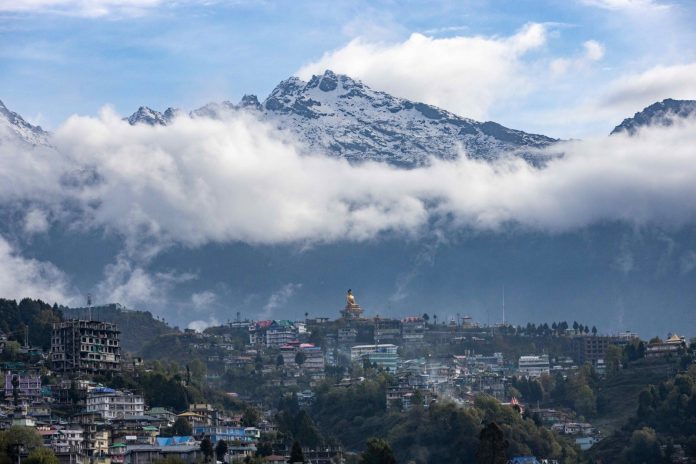Washington has criticised Beijing’s list of 30 new names for places along the 1,865-mile (3,000km) disputed Himalayan border between China and India, formally known as the Line of Actual Control, as yet another “unilateral attempt” to reassert its territorial claims.
“The United States strongly opposes any unilateral attempts to advance territorial claims by incursions or encroachments, military or civilian, across the Line of Actual Control,” a US State Department representative said on Tuesday.
On Sunday, the Post first reported about the Chinese Ministry of Civil Affairs’ fourth list of “standardised” names for places, including mountains, rivers, residential areas in the Indian-administered Arunachal Pradesh state, which China calls Zangnan and claims as part of the Tibetan autonomous region.
Do you have questions about the biggest topics and trends from around the world? Get the answers with SCMP Knowledge, our new platform of curated content with explainers, FAQs, analyses and infographics brought to you by our award-winning team.
After the report was picked up by several Indian news outlets, New Delhi’s foreign affairs ministry rejected Beijing’s “senseless attempt” at “inventing” names and “altering reality”.
“If today I change the name of your house, will it become mine? Arunachal Pradesh was, is and will always be a state of India. Changing names does not have an effect,” the Indian external affairs minister, Subrahmanyam Jaishankar, said on Monday.
“Our army is deployed at the Line of Actual Control,” he was quoted as saying.
The two nuclear-armed neighbours have held 21 rounds of military-level talks since 2020, when at least 20 Indian and four Chinese soldiers were killed in a fight along the border.
No breakthrough was achieved during the latest meeting in February as both sides agreed to keep communicating while also positioning extra troops and equipment.
Disagreements over the poorly demarcated border led to a war between the countries in 1962.
Last month, a tunnel inaugurated by Prime Minister Narendra Modi in Arunachal Pradesh became the latest flashpoint. As India and China traded warnings and made overlapping claims of national sovereignty, Washington openly sided with its Indo-Pacific partner New Delhi – angering Beijing.
“The United States recognises Arunachal Pradesh as Indian territory,” a State Department representative said in a press briefing. Beijing then accused Washington of trying “to provoke and take advantage of other countries’ conflicts to serve its selfish geopolitical interests”.
Arunachal Pradesh, located on India’s eastern tip, is claimed in its entirety by China. The state shares historical ties with Tibet and is home to the Tawang Monastery, where the sixth Dalai Lama was born in 1683. Buddhists account for the fourth-largest religious group there, following Christians, Hindus and a mix of other local religions.
After being largely neutral on the dispute for decades, the US in recent years has strengthened its cooperation with New Delhi, including a more active role in sharing intelligence as part of its Indo-Pacific strategy to check Chinese activity in the region.
In its October 2022 National Defence Strategy, the administration of President Joe Biden pledged that it would support US allies and partners when they encounter “acute forms of grey zone coercion” from China’s “campaigns to establish control over the East China Sea, Taiwan Strait, South China Sea and disputed land borders such as with India”.
Real-time intelligence provided by the US about Chinese positions along the disputed line prepared India to successfully ward off a potential Chinese military “incursion” in December 2022, marking the first time Washington passed on key information on Chinese strength along the Sino-India in advance to its Indian counterparts.
































